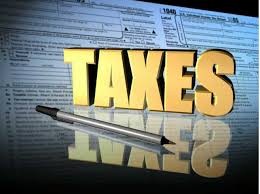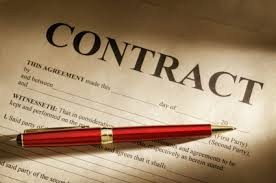Ranking of economies for doing business – World Bank Group
 Ease of doing business is an index devised by World Bank. It is based upon 10 parameters stating how easy it is to start and run a business in a nation. The top rankings indicate that the regulatory environment in those nations is conducive for business operations. The index averages a country’s percentile ranking on its component ease of doing business. The nations are ranked from 1 to 189. The 10 parameters for doing business are:
Ease of doing business is an index devised by World Bank. It is based upon 10 parameters stating how easy it is to start and run a business in a nation. The top rankings indicate that the regulatory environment in those nations is conducive for business operations. The index averages a country’s percentile ranking on its component ease of doing business. The nations are ranked from 1 to 189. The 10 parameters for doing business are:
1. Starting a business. 2. Dealing with construction permits 3. Getting electricity 4. Registering property 5. Getting credit 6. Protecting investors 7. Paying taxes 8. Trading across borders 9. Enforcing contracts 10. Resolving insolvency
Nations will progress only if they create conducive atmosphere for starting and running businesses. The entrepreneurial growth is a must for a healthy economy to compete effectively in the modern global marketplace and for providing economic security for both people and places. New ideas and new products are always welcome by people across the globe. An effective economic development strategy will require two broad elements. First is cultivation of the fundamentals of a strong business climate that can support and drive a vibrant economy. Second is a well educated workforce and uncongested infrastructure that can support both commerce and recreation. Also, the tax burdens that are carefully balanced against the benefits received by the state as well as the entrepreneurs are equally important. Along the way, the nation must protect natural environment, as well as our cultural values. Amenities and quality of life considerations have become increasingly important to where people want to live and where good jobs are grown.
World Bank’s index of doing business with ease gives clarifications to the entrepreneurial world as to which countries are encouraging for starting or expanding their ventures across borders.
 Starting a business: This parameter records all procedures officially required for starting a commercial or industrial business; it studies the time and cost to complete these procedures and the paid-in minimum capital requirement. This point studies all procedures for obtaining necessary licenses and permits and notifications, verifications or writings for the company and employees with relevant authorities. The ranking of ease of starting a business is the simple average of the percentile rankings on its component indicator. The law of the country, detailed list of procedures, time and cost for completion of procedure, paid-in minimum capital required, support from local government bodies, legalities, and notaries to complete and verify data each of these points are checked. It’s been observed the easier the procedures, the faster the growth. Too much of governance, too much of paper work complicates and frustrates the budding entrepreneurs in an economy.
Starting a business: This parameter records all procedures officially required for starting a commercial or industrial business; it studies the time and cost to complete these procedures and the paid-in minimum capital requirement. This point studies all procedures for obtaining necessary licenses and permits and notifications, verifications or writings for the company and employees with relevant authorities. The ranking of ease of starting a business is the simple average of the percentile rankings on its component indicator. The law of the country, detailed list of procedures, time and cost for completion of procedure, paid-in minimum capital required, support from local government bodies, legalities, and notaries to complete and verify data each of these points are checked. It’s been observed the easier the procedures, the faster the growth. Too much of governance, too much of paper work complicates and frustrates the budding entrepreneurs in an economy.
 Dealing with construction permits: These procedures include obtaining and submitting all relevant project-specific documents such as building plans, site maps and certificates of urbanism to the competent authorities; hiring external third-party supervisors, engineers or inspectors if necessary; obtaining all necessary clearances, licenses, permits and certificates, submitting all required notifications; and requesting and receiving all necessary inspections. Additional procedures include time and cost related to obtaining an electricity connection in the preconstruction stage, procedures necessary to register the property so that it can be used as collateral or transferred to another entity, time and cost to complete each procedure. The ranking on the ease of dealing with construction permits is the simple average of the percentile rankings on its component indicators.
Dealing with construction permits: These procedures include obtaining and submitting all relevant project-specific documents such as building plans, site maps and certificates of urbanism to the competent authorities; hiring external third-party supervisors, engineers or inspectors if necessary; obtaining all necessary clearances, licenses, permits and certificates, submitting all required notifications; and requesting and receiving all necessary inspections. Additional procedures include time and cost related to obtaining an electricity connection in the preconstruction stage, procedures necessary to register the property so that it can be used as collateral or transferred to another entity, time and cost to complete each procedure. The ranking on the ease of dealing with construction permits is the simple average of the percentile rankings on its component indicators.
 Getting electricity: This topic tracks the procedures, time and cost required for a business to obtain a permanent electricity connection for a newly constructed factory, office, premise or warehouse. These procedures include applications and contracts with electricity utilities, all necessary inspections and clearances from the utility and other agencies and the external and final connection works. This topic checks the process of getting an electricity connection along with the time and cost to complete each procedure. The ranking on the ease of getting electricity is the simple average of the percentile rankings on its component indicators such as time, cost, deposit, site and inspection.
Getting electricity: This topic tracks the procedures, time and cost required for a business to obtain a permanent electricity connection for a newly constructed factory, office, premise or warehouse. These procedures include applications and contracts with electricity utilities, all necessary inspections and clearances from the utility and other agencies and the external and final connection works. This topic checks the process of getting an electricity connection along with the time and cost to complete each procedure. The ranking on the ease of getting electricity is the simple average of the percentile rankings on its component indicators such as time, cost, deposit, site and inspection.
 Registering property:This theme examines the steps, time and cost involved in registering property, assuming a standardized case of an entrepreneur who wants to purchase land and a building that is already registered and free of title dispute. The process starts with obtaining the necessary documents, such as a copy of the seller’s title, and ends when the buyer is registered as the new owner of the property. Every procedure required by law or necessary in practice is included, whether it is the responsibility of the seller or the buyer and even if it must be completed by a third party on their behalf. This parameter records the full sequence of procedures necessary for a business (buyer) to purchase a property from the seller and to transfer the property title to the buyer’s name so that the buyer can use the property for expanding its business, use the property as collateral in taking new loans or, if necessary, sell the property to another business. The process starts with obtaining the necessary documents, such as a copy of the seller’s title if necessary, and conducting due diligence if required. The transaction is considered complete when it can be used as collateral for a bank loan or resell it. The ranking on the ease of registering property is the simple average of the percentile rankings on its component indicators.
Registering property:This theme examines the steps, time and cost involved in registering property, assuming a standardized case of an entrepreneur who wants to purchase land and a building that is already registered and free of title dispute. The process starts with obtaining the necessary documents, such as a copy of the seller’s title, and ends when the buyer is registered as the new owner of the property. Every procedure required by law or necessary in practice is included, whether it is the responsibility of the seller or the buyer and even if it must be completed by a third party on their behalf. This parameter records the full sequence of procedures necessary for a business (buyer) to purchase a property from the seller and to transfer the property title to the buyer’s name so that the buyer can use the property for expanding its business, use the property as collateral in taking new loans or, if necessary, sell the property to another business. The process starts with obtaining the necessary documents, such as a copy of the seller’s title if necessary, and conducting due diligence if required. The transaction is considered complete when it can be used as collateral for a bank loan or resell it. The ranking on the ease of registering property is the simple average of the percentile rankings on its component indicators.
 Getting credit: This indicator measures the legal rights of borrowers and lenders with respect to secured transactions through one set of pointers and the sharing of credit information through another. The first set of indicators measure whether certain features that facilitate lending exist within the applicable collateral and bankruptcy laws. The second set measures the coverage, scope and accessibility of credit information available through public credit registries and private credit bureaus. The ranking is based on the percentile rankings on the sum of its component indicators such as legal rights of borrowers and lenders, analysis of laws and regulations as well as public sources of information on collateral and bankruptcy laws.
Getting credit: This indicator measures the legal rights of borrowers and lenders with respect to secured transactions through one set of pointers and the sharing of credit information through another. The first set of indicators measure whether certain features that facilitate lending exist within the applicable collateral and bankruptcy laws. The second set measures the coverage, scope and accessibility of credit information available through public credit registries and private credit bureaus. The ranking is based on the percentile rankings on the sum of its component indicators such as legal rights of borrowers and lenders, analysis of laws and regulations as well as public sources of information on collateral and bankruptcy laws.
It checks whether the law allows a business to grant a no possessory security right in substantially all its movable assets, without requiring a specific description of the collateral. It also checks what security rights are given in future or after-acquired assets and may extend automatically to the products, proceeds or replacements of the original assets.
 Protecting investors: this indicator checks the strength of minority shareholders in protection against directors’ misuse of corporate assets for personal gain. The indicators distinguish 3 dimensions of investor protections: transparency of related-party transactions (extent of disclosure index), liability for self-dealing (extent of director liability index) and shareholders’ ability to sue officers and directors for misconduct (ease of shareholder suits index). The ranking of the strength of investor protection index is the simple average of the percentile rankings on its component indicators.
Protecting investors: this indicator checks the strength of minority shareholders in protection against directors’ misuse of corporate assets for personal gain. The indicators distinguish 3 dimensions of investor protections: transparency of related-party transactions (extent of disclosure index), liability for self-dealing (extent of director liability index) and shareholders’ ability to sue officers and directors for misconduct (ease of shareholder suits index). The ranking of the strength of investor protection index is the simple average of the percentile rankings on its component indicators.
It also checks whether a publicly traded corporation is listed on the nation’s most important stock exchange. If the number of publicly traded companies listed on that exchange is less than 10, or if there is no stock exchange in the economy, it is assumed that Buyer is a large private company with multiple shareholders. It also checks whether a company has board of directors and a chief executive officer (CEO) who may legally act on behalf of shareholders; whether this is permitted, even if this is not specifically required by law. Further, this indicator studies whether a company has a supervisory board (applicable to economies with 2-tier board system) on which 60% of the shareholder-elected members have been appointed and whether it is a manufacturing company and has its own distribution network.
 Paying taxes: this indicator records the taxes and mandatory contributions that a medium-size company must pay in a given year. It also measures the administrative burden of paying taxes and contributions. The project was developed and implemented in cooperation with PricewaterhouseCoopers (PwC). Taxes and contributions measured include the profit or corporate income tax, social contributions and labor taxes to be paid by the employer, property taxes, property transfer taxes, dividend tax, capital gains tax, financial transactions tax, waste collection taxes, vehicle and road taxes, and any other small taxes or fees. The ranking on the ease of paying taxes is the simple average of the percentile rankings on its component indicators, with a threshold being applied to one of the component indicators – the total tax rate. The threshold is defined as the highest total tax rate among the top 15% of economies in the ranking on the total tax rate. It is calculated and adjusted on a yearly basis. All economies with a total tax rate below this threshold receive the same score as the economy at the threshold. The threshold is not based on any economic theory of an “optimal tax rate” that minimizes twist or maximizes efficiency in the tax system of an economy overall. Instead, it is mainly empirical in nature, set at the lower end of the distribution of tax rates levied on medium-size enterprises in the manufacturing sector as observed through the paying taxes indicators. This reduces the bias in the indicators toward economies that do not need to levy significant taxes on companies.
Paying taxes: this indicator records the taxes and mandatory contributions that a medium-size company must pay in a given year. It also measures the administrative burden of paying taxes and contributions. The project was developed and implemented in cooperation with PricewaterhouseCoopers (PwC). Taxes and contributions measured include the profit or corporate income tax, social contributions and labor taxes to be paid by the employer, property taxes, property transfer taxes, dividend tax, capital gains tax, financial transactions tax, waste collection taxes, vehicle and road taxes, and any other small taxes or fees. The ranking on the ease of paying taxes is the simple average of the percentile rankings on its component indicators, with a threshold being applied to one of the component indicators – the total tax rate. The threshold is defined as the highest total tax rate among the top 15% of economies in the ranking on the total tax rate. It is calculated and adjusted on a yearly basis. All economies with a total tax rate below this threshold receive the same score as the economy at the threshold. The threshold is not based on any economic theory of an “optimal tax rate” that minimizes twist or maximizes efficiency in the tax system of an economy overall. Instead, it is mainly empirical in nature, set at the lower end of the distribution of tax rates levied on medium-size enterprises in the manufacturing sector as observed through the paying taxes indicators. This reduces the bias in the indicators toward economies that do not need to levy significant taxes on companies.
This indicator is based on importing a standardized cargo based on the time and cost of excluding tariffs associated with exporting and importing of goods by sea transport in a nation. The time and cost essential to complete every official procedure for exporting and importing the goods are recorded; however, the time and cost for sea transport are not included. All documents needed by the trader to export or import the goods across the border are also verified. For exporting goods, procedures range from packing the goods into the container at the warehouse till their departure from the port of exit. For importing goods, procedures range from the vessel’s arrival at the port of entry to the cargo’s delivery at the warehouse. For non-coastal economies, these include procedures at the inland border post, since the port is located in the transit economy. Payment is made by letter of credit, and the time, cost and documents required for the issuance or advising of a letter of credit are taken into account. The ranking on the ease of trading across borders is the simple average of the percentile rankings on its element indicators such as local freight forwarders, shipping lines, customs brokers, port officials and banks. These factors provide information on required documents and cost as well as the time to complete each procedure. To make the data comparable across economies, several assumptions about the business and the traded goods are used.
 Enforcing contracts:This indicator measures the efficiency of the judicial system in resolving a commercial dispute. The methodology includes following the step-by-step evolution of a commercial sale dispute before local courts. The data is collected through study of the codes of civil procedure and other court regulations as well as questionnaires completed by local litigation lawyers and by judges. The ranking on the ease of enforcing contracts is the simple average of the percentile rankings on its component indicators. To indicate overall efficiency, one procedure is subtracted from the total number for economies that have specialized commercial courts, and one procedure for economies that allow electronic filing of the initial complaint in court cases. Some procedural steps that are part of others are not counted in the total number of procedures. Time is recorded in calendar days, counted from the moment the plaintiff decides to file the lawsuit in court until final result. Cost is recorded as a percentage of the claim, assumed to be equivalent to 200% of income per capita. No bribes are recorded. Three types of costs are recorded: court costs, enforcement costs and average attorney fees. And, court costs include all court costs that petitioner (Seller) must advance to the court. Enforcement costs are all costs that Seller (plaintiff) must advance to enforce the judgment through a public sale of Buyer’s movable assets, regardless of the final cost to Seller. Average attorney fees are the fees that Seller (plaintiff) must advance to a local attorney to represent Seller in the standardized case.
Enforcing contracts:This indicator measures the efficiency of the judicial system in resolving a commercial dispute. The methodology includes following the step-by-step evolution of a commercial sale dispute before local courts. The data is collected through study of the codes of civil procedure and other court regulations as well as questionnaires completed by local litigation lawyers and by judges. The ranking on the ease of enforcing contracts is the simple average of the percentile rankings on its component indicators. To indicate overall efficiency, one procedure is subtracted from the total number for economies that have specialized commercial courts, and one procedure for economies that allow electronic filing of the initial complaint in court cases. Some procedural steps that are part of others are not counted in the total number of procedures. Time is recorded in calendar days, counted from the moment the plaintiff decides to file the lawsuit in court until final result. Cost is recorded as a percentage of the claim, assumed to be equivalent to 200% of income per capita. No bribes are recorded. Three types of costs are recorded: court costs, enforcement costs and average attorney fees. And, court costs include all court costs that petitioner (Seller) must advance to the court. Enforcement costs are all costs that Seller (plaintiff) must advance to enforce the judgment through a public sale of Buyer’s movable assets, regardless of the final cost to Seller. Average attorney fees are the fees that Seller (plaintiff) must advance to a local attorney to represent Seller in the standardized case.
 Resolving insolvency: This indicator studies the time, cost and outcome of insolvency proceedings involving domestic entities. The data are derived from questionnaire responses by local insolvency practitioners and verified through a study of laws and regulations as well as public information on bankruptcy systems. The ranking on the ease of resolving insolvency is based on the recovery rate time for creditors to recover their credit which is recorded in calendar years. The period of time measured by Doing Business is from the company’s default until the payment of some or all of the money owed to the bank. Potential delay tactics by the parties, such as the filing of negligent appeals or requests for extension, are taken into consideration. The cost of the proceedings is recorded as a percentage of the value of the debtor’s estate. The cost is calculated on the basis of questionnaire responses and includes court fees and government levies; fees of insolvency administrators, auctioneers, assessors and lawyers; and all other fees and costs.
Resolving insolvency: This indicator studies the time, cost and outcome of insolvency proceedings involving domestic entities. The data are derived from questionnaire responses by local insolvency practitioners and verified through a study of laws and regulations as well as public information on bankruptcy systems. The ranking on the ease of resolving insolvency is based on the recovery rate time for creditors to recover their credit which is recorded in calendar years. The period of time measured by Doing Business is from the company’s default until the payment of some or all of the money owed to the bank. Potential delay tactics by the parties, such as the filing of negligent appeals or requests for extension, are taken into consideration. The cost of the proceedings is recorded as a percentage of the value of the debtor’s estate. The cost is calculated on the basis of questionnaire responses and includes court fees and government levies; fees of insolvency administrators, auctioneers, assessors and lawyers; and all other fees and costs.
The Doing Business Report started since November 2001. The index is based on the study of laws and regulations, with the input and verification by more than 9,600 government officials, lawyers, business consultants, accountants and other professionals in 185 economies who routinely advise on or administer legal and regulatory requirements. In 2002 Simeon Djankov, Rafael La Porta, Florencio Lopez-de-Silanes and Andrei Shleifer published a paper on this topic in the Quarterly Journal of Economics titled “The Regulation of Entry”. The paper presented data on the regulation of entry of start-up firms in 85 countries covering the number of procedures, official time and official cost that a start-up must bear before it could operate legally. The main findings of the paper were that: countries with heavier regulation of entry have higher corruption and larger unendorsed economies. Such economies don’t bother about better quality of public or private goods. But, countries with more democratic and limited governments have lighter regulation of entry and these economies foster entrepreneurial culture. The paper got elated publicity because it provided quantitative evidence that entry regulation benefits politicians and bureaucrats without adding value to the private sector, or granting any additional protection.
In June 2013 India stood at 134th position out of 189 positions in ranking of economies by World Bank for doing business in a nation. Whereas Singapore ranks in number one position.














































